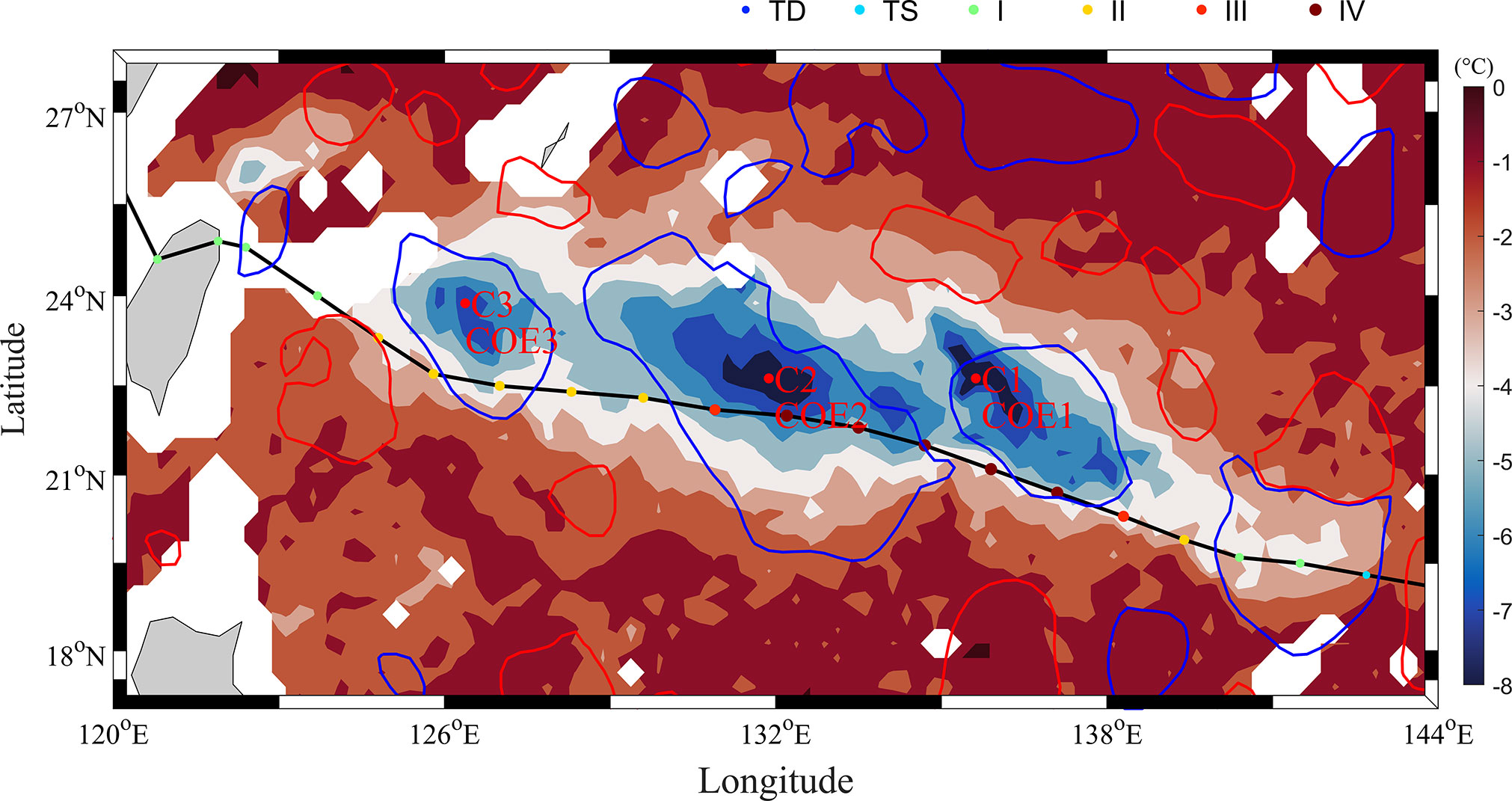Mechanism of oceanic eddies in modulating the sea surface temperature response to a strong typhoon in the western North Pacific
Sheng Lin, Wen-Zhou Zhang, Yuntao Wang and Fei Chai
Published in Frontiers in Marine Science, January 2023
Eddies are ubiquitous mesoscale dynamics in oceans worldwide that prominently influence the upper ocean. Specifically, the presence of preexisting eddies can modulate oceanic responses to passing typhoons, for which the underlying mechanism requires further investigation. In 2013, Typhoon Soulik traveled over 2,000 km in the western North Pacific, encountering multiple eddies, offering a suitable opportunity for investigating the impact of eddies on typhoon-induced upper ocean responses. A coupled ocean-atmosphere model was developed for this event, and the simulations were validated with multiple observations. The surface cold wake after Typhoon Soulik was successfully reproduced by the coupled model, showing a multicore structure, which was due to the preexisting mesoscale cyclonic eddies along the typhoon path. An experimental case excluding eddies was also tested in the numerical model. The comparison between the control and experimental cases revealed that sea surface cooling was enhanced by eddies via the vertical mixing and horizontal advection of eddy-related currents. In particular, vertical mixing enhanced sea surface cooling beneath the typhoon center due to the stronger vertical stratification within the preexisting cyclonic oceanic eddies. The eddy-related current with a horizontal temperature gradient contributed to advection, enhancing sea surface cooling at the cooling center and leading to a rightward-shifted pattern of enhanced sea surface cooling. This study enriches the understanding of the complex upper ocean dynamics under the combined effects of typhoons and eddies.

Fig. Spatial distribution of maximum sea surface cooling from remote sensing (color shading) during Typhoon Soulik and the preexisting mesoscale eddies on July 6 (blue and red contours). The blue (red) contours delineate the edges of the CEs and anticyclonic eddies. The red dots (C1, C2 and C3) are the cooling centers within the corresponding preexisting CEs (CE1, CE2 and CE3).
Lin, S., Zhang, W., Wang, Y., Chai, F. (2023) Mechanism of oceanic eddies in modulating the sea surface temperature response to a strong typhoon in the western North Pacific, Frontiers in Marine Science, 10. https://doi.org/10.3389/fmars.2023.1117301